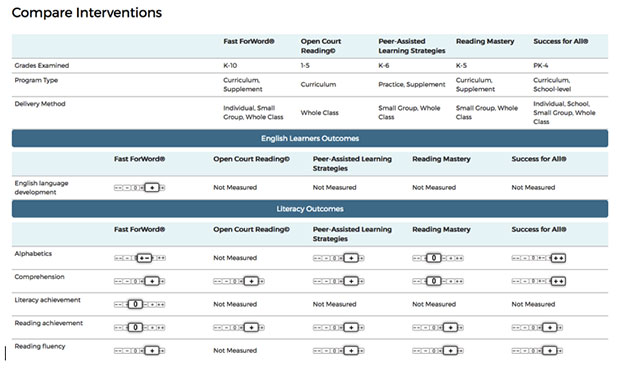How can school personnel identify and select evidence-based practices or programs?
Page 3: Select an Evidence-Based Practice or Program

An evidence-based practice or program is one supported by rigorous research demonstrating its effectiveness. School personnel seeking such practices or programs can consult a variety of reputable sources (e.g., What Works Clearinghouse, Best Evidence Encyclopedia). These often highlight general information, research findings, and effectiveness ratings for each practice or program.
As they search for an evidence-based practice or program, schools often discover one that appears to meet the needs of their students but has yet to be evaluated by one of these sources. In these cases, it is still possible to evaluate a given practice or program using guidelines made available by the U.S. Department of Education.
| Click here for a list of Web-based resources for determining whether a practice or program is evidence-based.
Web-based resources for determining whether a practice is evidence-based
Best Evidence Encyclopedia Center for Data-Driven Reform in Education (Johns Hopkins University) http://www.bestevidence.org/
This online clearinghouse offers information on the researched evaluations of numerous educational programs in a coherently arranged and easy-to-navigate format.
Big Ideas in Beginning Reading Institute for the Development of Education Achievement, University of Oregon http://reading.uoregon.edu/
This website focusing on the five core components of reading offers information and resources to educators and parents with the goal of ensuring that all students are able to read at grade-level by the close of their third-grade year.
Center on Instruction RMC Research Corporation http://www.centeroninstruction.org/
Explore this website to find “a cutting-edge collection of scientifically based research and information on K–12 instruction in reading, math, science, special education, and English language learning.” On hand are links to resources for struggling readers, literary resources for adolescents, an introduction to progress monitoring in math, and many, many others.
The Florida Center for Reading Research Florida State University Learning Systems Institute http://www.fcrr.org/
This site exists to disseminate research-validated information regarding literacy and assessment. Included are articles related to RTI implementation and information for principals about how to improve reading outcomes in their schools. Of particular interest here are the FCRR reports.
U.S. Department of Education Institute of Education Services
https://ies.ed.gov/ncee/wwc/publications/practiceguides/
Visit this website to find IES Practice guides on a host of topics (e.g., “Encouraging Girls in Math and Science” and “Reducing Behavior Problems in the Elementary School Classroom”). Other guides on hand: “Using Student Achievement Data to Support Instructional Decision Making,” “Improving Adolescent Literacy: Effective Classroom and Intervention Practices,” and “Organizing Instruction and Study to Improve Student Learning,” to name but a few.
International Campbell Collaboration https://www.campbellcollaboration.org/
The Campbell Collaboration “produces systemic reviews of the effects of social interventions.” The group’s Internet home houses an extensive library as well as tips and guidelines for producing systematic reviews, among other resources.
National Center on Response to Intervention American Institutes for Research http://www.rti4success.org/index.php?option=com_content&task=view&id=20&Itemid=71 The website of the National Center on Response to Intervention offers links and resources in an array of subject areas. Included are links to a “Screening Tools Chart” and “Progress Monitoring Tools Chart,” a library, and training modules.
U.S. Office of Special Education Programs
http://www.osepideasthatwork.org/
Visit the OSEP Ideas that Work website to find tool kits on “Teaching and Assessing Students with Disabilities” (including a version with materials for parents) and “Universal Design for Learning (UDL).”
Promising Practices Network RAND Corporation https://www.rand.org/pubs/tools/TL145.html
The Promising Practices Network—a project of the RAND Corporation—highlights “summaries of programs and practices that are proven to improve outcomes for children.” Pre-screened and evaluated programs on hand here include Early Intervention in Reading, I CAN Learn Pre-Algebra and Algebra, and Good Behavior Game, among many, many others.
Social Programs that Work Coalition for Evidence-Based Policy https://evidencebasedprograms.org/
This website of the Coalition for Evidence-Based Policy, a think-tank dedicated to locating and promoting effective and evidence-based social programs, includes information about a host of projects in a wide array of categories, including “Early Childhood,” “Youth Development,” and “Mental Health.”
U.S. Department of Education Institute of Education Services
https://ies.ed.gov/ncee/wwc/
Browse this site to read the latest from the U.S. Department of Education on topics related to “Adolescent Literary,” “Beginning Reading,” “Dropout Prevention,” “Early Childhood Education,” “Elementary School Math,” “English Language Learners,” “Middle School Math,” and “Character Education.” Online resources allow users to create their own “Effectiveness Rating” chart.
(Close this panel) |
| Identifying and Implementing Educational Practices Supported by Rigorous Evidence: A User Friendly Guide |
Keep in mind that, due to the inherent difficulties posed by research, limited time, and lack of funding, not all educational practices and programs have been subjected to this type of rigorous research.
Research Shows
- Teachers who understand the value or effectiveness of a program are more likely to implement it wholeheartedly.
(Barr, Tubman, Montgomery, & Soza-Vento, 2002)
- Involving those who will be implementing a practice or program in the process of researching and choosing it can help to create initial buy-in and result in better implementation.
(Fixsen, Naoom, Blase, Friedman, & Wallace, 2005)
Once school personnel understand how to identify an evidence-based practice or program, they need to match it to the school’s specific needs and resources. They should select a practice or program that has been shown to work with populations similar to those at their school and that can be effectively implemented given their resources. Among the factors that should be taken into account are the characteristics of the school’s students and various factors related to implementation:
Student Characteristics
- Ages or grades
- SES
- Gender
- Race
- English learners
- Students with disabilities
Implementation Factors
- Group sizes
- Length of sessions
- Frequency of sessions
- Location of sessions
- Amount of training required to implement
Note: Obtaining this type of information about a practice or program may require additional information-gathering from sources such as a vendor’s website.
Of course, it may not be possible to find a practice or program that matches all of the student characteristics in a given school. In such instances, school personnel should identify a practice or program that matches as many characteristics as possible. For example, if the goal is to increase reading achievement scores among elementary English learners (EL), school personnel should identify a practice or program that has been shown to be effective with this population. Although there may be several reading practices or programs that have been shown to be effective with elementary school students, it may be the case that only a few of these have been shown to be effective with ELs.
Cynthia Alexander discusses how her school examines research data to make sure that a new practice or program matches the demographics of her school’s students. Brenda Williams discusses the importance of considering the cultural context of students when selecting a practice or program.

Cynthia Alexander
NIUSI-LeadScape Principal
Evans Elementary School
Memphis, TN
(time: 1:45)

Brenda Williams, EdD
Educational Policy, Planning & Leadership
The College of William and Mary
Williamsburg, VA
(time: 1:31)
Transcript: Cynthia Alexander
How we identify the evidence-based programs, we actually go beyond what is explained to us or marketed to us, because when programs are presented to the schools, they’re always presented in a way that it seems like is exactly what you need. But you have to go beyond and you have to match your need with the program needs and not necessarily take the word of the vendor or the trainer. You have to look for yourself to make sure that it lines up with what you need because there’s so many things being thrown at you. Especially if you are in a school district where you have high-poverty, struggling students, students who struggle with reading, they will make everything sound like it’s perfect for your school, but it’s not necessarily perfect for your school, and you always have to ask who was the research done on. Was the research done on a school that mirrors or reflects the demographics of your school? Or was it done in another part of the country where the students don’t look anything or struggle in any way like your students? So you need to make sure that the practices actually line up with the needs for even your area or your region of the country, because what works in Memphis might not necessarily work in Phoenix. Typically, in education, you’ll have a lot of materials and resources available to you, but they might not necessarily fit the needs of your school, because the demographics of the schools are different; the makeup of the student body is different; you have different academic levels; you might have a higher ELL or special ed population. And you have to make sure that what you use at your school accommodates the actual needs. So even beyond researching the program you still have to look at how that program can specifically meet the needs of your students by addressing your student body, looking at the data and the information that is relevant to your site.
Transcript: Brenda Williams, EdD
We do have to consider the cultural context of students as decisions are made about appropriate educational interventions. Variables such as linguistic and the match between native tongue or language and that of the home to what we’re using in the school is a consideration. There are many students for whom we are looking for effective interventions that are concomitantly impacted, and so I think that is also a consideration. School staff should be aware of the links between culture and student engagement. We need to exercise caution that, while we can document some consistent behavior and performance patterns within a cultural group, that not every member of that group will respond in the same way. So as we attempt to equip school staff and leaders with the tool to use for decision making, we always have to have that caveat, that not every student who falls within that group will respond accordingly or as we might expect, that there may be some uniqueness or intra-cultural differences. Of course, knowing your own students and your own catchment area, having your local norms, and knowing what has worked for similarly situated students as you look across the research is helpful.
To learn more about factors to consider when selecting an evidence-based practice or program that meets the needs of a school and its students, we encourage you to listen to the following IRIS Interview:
Before choosing a new curriculum or intervention for their district or school, staff may want to review some resources developed by the U.S. Department of Education. These two-page documents contain questions relevant for a number of educational topics and were designed to help personnel decide whether a practice or program matches district or school needs and student characteristics. Click on the binder labeled Introduction for an overview, then click on a specific topic of interest.
 |
Questions to Consider When You Plan to Purchase New Curricula and Interventions
|
Introduction
Before you begin, consider first, who should be involved in this discussion? Are you choosing this curriculum or intervention on your own or will others be involved? Every district, school or program (e.g., a Part C Preschool program) is different as to who and how many people should be involved in choosing a new curriculum or intervention. No matter who initiates the search or how many people are on the committee, it is very important that all opinions and ideas be gathered and considered. Choosing a Curriculum or Intervention
Before choosing a new curriculum or intervention for your district, school, or program you should consider questions about: I. The context or set of circumstances, including place, in which the curriculum or intervention will be implemented; II. The evidence that demonstrates the effectiveness of the curriculum or intervention; and III. The resources, or sources of support, including funding and personnel, that will be required to successfully implement and sustain the use of the curriculum or program. Questions about context: Each school district has different needs, priorities, student populations, and resources. Choosing a curriculum or intervention that is right for you means taking into account the unique characteristics of your district, school, or program and making sure that the curriculum or intervention will match your needs, specific circumstances, and resources. Questions to ask include:
Questions about evidence: Evidence offers data about how well a curriculum or intervention has been demonstrated to improve student outcomes. It is important to ask questions about what the evidence shows about student outcomes resulting from the use of the curriculum or intervention, as well as questions about the conditions under which studies were conducted. There are differing levels of evidence to consider when examining evidence-based practices. It is up to the decision makers to determine the level of evidence, both quality and quantity, that is most relevant to their needs. Based on the definitions used by the Institute of Education Sciences practice guide standards, these levels are: 1. Strong evidence, which includes research that supports the effectiveness of a curriculum or intervention through (a) several randomized controlled trials or quasi-experiments, (b) a systematic review of research, or (c) one large well-designed randomized controlled multi-site trial. This evidence must be proven to be reliable (gets the same result time after time) and valid (there is less than a 5% chance of the result being inaccurate). Example: A meta-analysis of 10 randomized control trial studies shows conclusive evidence that kindergarten and first grade students with learning disabilities who are exposed to a particular math intervention have significantly better outcomes than students with learning disabilities who were not exposed to the intervention. 2. Moderate evidence often comes from studies where there are strong causal conclusions (saying that one event caused another), but the results may only relate to the specific group that participated in the research. For example, results tested in an elementary setting may not apply to students in secondary settings. Moderate evidence includes that from (a) experiments or quasi-experiments that have small samples sizes or otherwise limit how much the results can be generalized to other populations, (b) comparison studies that do not demonstrate that two groups are equal at pretest, but consistently show strong outcomes for groups being given a particular program or intervention and have no major flaws in their design. Example: Students taught using a reading program that is based on the National Reading Panel’s components of reading have better outcomes than students using another reading program in an elementary school classroom, but there is not demonstrated evidence on outcomes for students in a high school setting. 3. Low evidence comes from research or studies that do not meet the qualifications for moderate or strong evidence. These include practices for which original data have not been collected, but for which professional anecdotes and wisdom exist. These may also include practices for which some evidence exists, but not from a randomized or quasi-experimental study, and which cannot be generalized to other populations. Example: Teachers in a district implement a positive behavior system across all schools at the elementary school level. Data are collected before, during, and after implementation and indicate that office referrals are significantly reduced and hallway behavior improves at these schools nine months after full implementation of the program. Questions to ask include:
Questions about resources: Implementing any new curriculum or intervention requires resources. It is important to consider the total cost of implementing a new program as compared to similar programs, including purchasing costs, staff requirements, training needs, and the cost of sustaining use of the program over time. Questions to ask include:
|
(Close this panel)
Questions to Consider When You Plan to Purchase New Curricula and Interventions
|
Topic Focus: Behavior
When choosing a new curriculum or intervention related to behavior, it is important to first determine whether the district has a need related to social and emotional learning, positive behavior supports or both. Social and emotional learning is the process through which children become better at understanding and managing their emotions, learning to make choices, and developing friendships. Positive behavior supports impact the learning environments in a school to increase positive behaviors among students and decrease negative behaviors. It is important that districts examine the behavior challenges they are facing and their goals in terms of student behavior as they make choices about curricula and interventions. Questions about district need:
Questions about program or intervention characteristics:
|
(Close this panel)
Questions to Consider When You Plan to Purchase New Curricula and Interventions
|
Topic Focus: Early Childhood
Early childhood provides services for children from birth to Kindergarten age who qualify under part B or C of the Individuals with Disabilities Education Act (IDEA). When choosing an early childhood curriculum or intervention, it is important to understand the early learning and development needs of your district’s young children and their families and examine the characteristics of curricula and interventions in relation to those needs. Early childhood curricula and interventions may be comprehensive, support development in multiple domains, or be content specific Questions about district need:
Questions about program characteristics:
References: Frede, E. & Ackerman, D. J. (2007, March). Curriculum decision-making: Dimensions to consider. NIEER Preschool Policy Brief, Issue 12. Retrieved April 17, 2009, from http://nieer.org/resources/policybriefs/12.pdf. Institute for Education Sciences. (n.d.). WWC evidence review protocol for early childhood education interventions. Retrieved April 17, 2009, from https://ies.ed.gov/ncee/wwc/PDF/ECE_protocol.pdf. National Association for the Education of Young Children. (November, 2003). Early childhood curriculum, assessment, and program evaluation. Retrieved April 20, 2009, from https://www.naeyc.org/about/positions/pdf/CAPEexpand.pdf. Schweinhart, L. J. (2004). A school administrator’s guide to early childhood programs (2nd ed.). Ypsilanti, MI; High/Scope Press. |
(Close this panel)
Questions to Consider When You Plan to Purchase New Curricula and Interventions
|
Topic Focus: Mathematics
When choosing a new curriculum or intervention, it is important to first gain an understanding of your district’s need with respect to mathematics, and then to examine the characteristics of the curricula you are considering and determine the extent to which those programs meet your needs. Before making a decision, it is important to determine whether you are looking for a problem-based or a skill-based approach, whether you are looking for a student-directed or a teacher-directed approach, and whether you are looking for a complete program or a supplemental, more focused program, or some balance of these approaches.
Questions about district need:
Questions about program or intervention characteristics:
|
(Close this panel)
Questions to Consider When You Plan to Purchase New Curricula and Interventions
|
Topic Focus: Reading
When choosing a new curriculum or intervention, it is important to first gain an understanding of the needs of your district, school, or program with respect to reading, and then to examine the characteristics of the curriculum or intervention you are considering and determine the extent to which those programs meet your needs. The recommendations of the National Reading Panel will provide valuable guidance when evaluating reading curricula and interventions. Questions about district need:
Questions about program or intervention characteristics:
|
(Close this panel)
Questions to Consider When You Plan to Purchase New Curricula and Interventions
|
Topic Focus: Science
When choosing a new curriculum or intervention, it is important to first gain an understanding of your district, school, or program needs with respect to science, and then to examine the characteristics of the curricula you are considering and determine the extent to which those programs meet your needs. Before making a decision, it is important to determine whether you are looking for inquiry-based approaches that focus on student constructed learning as opposed to more traditional teacher-transmitted types of lessons. Questions about district need:
Questions about program or intervention characteristics:
|
(Close this panel)
Questions to Consider When You Plan to Purchase New Curricula and Interventions
|
Topic Focus: Instructional and Assistive Technology
When choosing a new technology product (assistive or instructional), it is important to understand your district’s needs and capacities related to technology. Consider conducting a technology audit of your district that surveys the capacity (age, reliability, extensibility) of hardware, software, Internet capacity and connectivity, tech support, teacher expertise and training needs, and community support. When considering a purchase, be sure to question the “total cost of ownership” – or the life-long costs of obtaining, using and maintaining the product. Knowing your capacity will help you and your colleagues examine the characteristics of the purchase you are considering and determine the extent to which those products or programs meet your needs. Questions about district need:
Questions about program or intervention characteristics:
|
(Close this panel)
Questions to Consider When You Plan to Purchase New Curricula and Interventions
|
Topic Focus: Transition
When choosing a new curriculum or intervention, it is important to first gain an understanding of your district’s need with respect to transition, and then to examine the characteristics of the available curricula you are considering and determine the extent to which these programs meet your needs. When making decisions about transition, it is important to consider whether you are interested in programs and curricula designed to prepare students for post-school education settings, post-school employment, or both. In addition, you will want to determine whether school-based programs that prepare students for transition through simulated activities or programs that encourage community-based participation and involvement are more appropriate for your needs. Questions about district need:
Questions about program or intervention characteristics:
|
(Close this panel)
Positive Behavioral Interventions and Supports (PBIS) and response to intervention (RTI) are schoolwide, multi-tiered approaches, not practices or programs. For this reason, they are often not listed in resources related to evidence-based research, despite being supported by strong research bases. To learn more about these frameworks, click on each expert panelist below.
Expert Panel

Larry Wexler, EdD
U.S. Department of Education Office of Special Education Programs
(time: 0:56)

George Sugai, PhD
Center on Positive Behavioral Interventions & Supports
(time: 0:43)
Transcript: Larry Wexler, EdD
We do not in the government endorse a specific approach. We see PBIS and RTI as a framework for instruction. They all tend to use some type of universal screening, they all use progress monitoring, they all use research-based instruction, and they all use multiple levels of intensity for instruction. One way we do, in fact, in the Department of Education, support RTI and PBIS is we fund two large technical assistance centers, one in PBIS and one in response to intervention. And these centers provide support generally to states in their effort to implement and scale-up statewide efforts in PBIS and RTI.
Transcript: Lynn Fuchs, PhD
The goal of RTI is to integrate state-of-the-art assessment practices and state-of-the-art instructional practices into a multilevel prevention system. So RTI, in and of itself, doesn’t refer to any one specific set of practices. It refers to a framework by which schools can think about how they bring to bear assessment and instructional practices together synergistically into a prevention system that tries to ensure that children don’t exit school without the skills they require to succeed in life.
Transcript: George Sugai, PhD
Schoolwide positive behavior supports, sometimes called PBIS, is designed to support academic and behavioral outcomes for all kids, so it’s really not an intervention. It’s a framework. It’s a way of helping schools, districts, and states organize their evidence-based behavioral intervention. Some of the features within PBIS have been evidence-based. For example, we’ve now got three randomized control trials that demonstrate the universal tier intervention within the schoolwide PBS framework works for kids. We know that some of the targeted interventions, like check-in/ check-out, behavioral education program, social skills club, and so forth, are interventions that work.
Click each of the logos below to learn about the process each school used to select an evidence-based practice or program.
 |
 |
 |
Select an Evidence-Based Practice or Program
![]() Paige Elementary School
Paige Elementary School
Having assessed their resources in regard to implementing progress monitoring, the principal and several implementation team members review the various commercially available progress monitoring systems at the website hosted by the National Center on Response to Intervention (http://www.rti4success.org/chart/progressMonitoring/progressmonitoringtoolschart.htm). After going over that information (e.g., cost, available technical support, grade level served) and the ratings for evidence of effectiveness for each product, the principal and team select the progress monitoring system that best fits their needs.
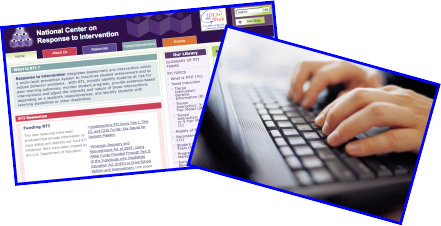
Select an Evidence-Based Practice or Program
![]() Grafton Middle School
Grafton Middle School
 During their assessment of school resources, the school improvement team realizes that for the past several years the fifth- and sixth-grade teachers have been using an evidence-based reading program that many of them feel has failed to yield the expected outcomes. The team now understands that it is not enough to have an evidence-based program; the program also needs to have been validated among a population of students similar to that at Grafton. Investigating the currently implemented program in more detail, they discover that it has been shown to work with populations similar to those at their school. They especially like that it has been shown to be effective among students from diverse economic backgrounds. In addition, they determine that the length and frequency of the sessions fit well with their existing reading schedule and that the program can be implemented with their available resources (i.e., personnel, funding, time, and facilities).
During their assessment of school resources, the school improvement team realizes that for the past several years the fifth- and sixth-grade teachers have been using an evidence-based reading program that many of them feel has failed to yield the expected outcomes. The team now understands that it is not enough to have an evidence-based program; the program also needs to have been validated among a population of students similar to that at Grafton. Investigating the currently implemented program in more detail, they discover that it has been shown to work with populations similar to those at their school. They especially like that it has been shown to be effective among students from diverse economic backgrounds. In addition, they determine that the length and frequency of the sessions fit well with their existing reading schedule and that the program can be implemented with their available resources (i.e., personnel, funding, time, and facilities).
Select an Evidence-Based Practice or Program
![]() DuBois High School
DuBois High School
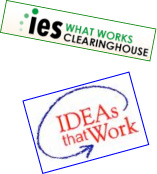 After the DuBois High School needs assessment identified “student behavior” as an area in need of improvement, the principal of DuBois High reads with interest a letter written by the U.S. Secretary of Education that describes Positive Behavioral Intervention and Supports (PBIS). He then goes looking for more information from the U.S. Department of Education. He and the other members of the school improvement team explore the What Works Clearinghouse website (https://ies.ed.gov/ncee/wwc/) and the OSEP Ideas That Work website (http://www.osepideasthatwork.org/), as well as several others, to learn about the available evidence-based behavior practices.
After the DuBois High School needs assessment identified “student behavior” as an area in need of improvement, the principal of DuBois High reads with interest a letter written by the U.S. Secretary of Education that describes Positive Behavioral Intervention and Supports (PBIS). He then goes looking for more information from the U.S. Department of Education. He and the other members of the school improvement team explore the What Works Clearinghouse website (https://ies.ed.gov/ncee/wwc/) and the OSEP Ideas That Work website (http://www.osepideasthatwork.org/), as well as several others, to learn about the available evidence-based behavior practices.
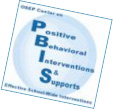 Of all the practices and programs they investigate, the team feels that the PBIS approach will best meet the needs of the students at DuBois High School. The team especially likes this approach because it can be individually tailored for their school and because it can be used in classrooms and in non-classroom settings. They also learn that PBIS is not a packaged program but rather a schoolwide approach to behavior management, and it has a strong evidence base supporting its effectiveness. These evidence-based features include:
Of all the practices and programs they investigate, the team feels that the PBIS approach will best meet the needs of the students at DuBois High School. The team especially likes this approach because it can be individually tailored for their school and because it can be used in classrooms and in non-classroom settings. They also learn that PBIS is not a packaged program but rather a schoolwide approach to behavior management, and it has a strong evidence base supporting its effectiveness. These evidence-based features include:
- Rewards for positive behavior
- Consistent consequences for problem behavior
- The use of data-based decision-making
- A continuum of intensive, individual interventions
Activity
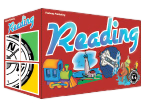 As with Paige Elementary, another school in the same district, Truman Elementary, is beginning to implement the RTI approach. After much discussion, the Truman school improvement team decides to gradually implement the approach, first piloting a high-quality beginning reading program with its 120 third-grade students. The Truman Elementary School improvement team is looking for a program that:
As with Paige Elementary, another school in the same district, Truman Elementary, is beginning to implement the RTI approach. After much discussion, the Truman school improvement team decides to gradually implement the approach, first piloting a high-quality beginning reading program with its 120 third-grade students. The Truman Elementary School improvement team is looking for a program that:
- Improves reading comprehension
- Is appropriate for third-grade students
- Shows positive (or potentially positive) effects
- Is appropriate for whole-class instruction
- Has demonstrated effectiveness in a public school setting
Using the What Works Clearinghouse website (https://ies.ed.gov/ncee/wwc/), help the staff at Truman Elementary to identify a program that is evidence-based and will best match their needs. Of the programs listed, which three look most promising and warrant further investigation? Explain your reasoning.
The feedback on this page is based on information from the What Works Clearinghouse website. Note that information on this website is subject to change as more programs are evaluated.
Example answer:
The three programs that look most promising are:
- Success for all®
- Peer-Assisted Learning Strategies
- Fast ForWord®
Of the programs listed, these have the highest improvement indexes for comprehension and are appropriate for beginning readers.
Troubleshooting
If you had difficulty identifying several potential reading programs that meet the needs of Truman Elementary, try again by following the steps below.
- Visit the What Works Clearinghouse website (http://ies.ed.gov/ncee/wwc).
- Select “Literacy” from the options featured beneath the green banner at the top of the page.
- Now select “More Filters” from the left-hand navigation bar.
- In the “More Filters” pop-up menu, choose “Grade” and select “3.”
- Then, select “School Type” and choose “Public.”
- Next, select “Delivery Method” and choose “Whole Class.”
- Finally, select “Outcomes” and click on the “Literacy” dropdown menu. Select the “Comprehension” checkbox.
- Click “Done.”
- Examine the interventions listed on the page. Use the clickable headers to sort the list by “Evidence of effectiveness,” “Intervention,” or “Grades examined.”
Note: Selecting “Class Type” and “Program Type” may limit the results you receive.
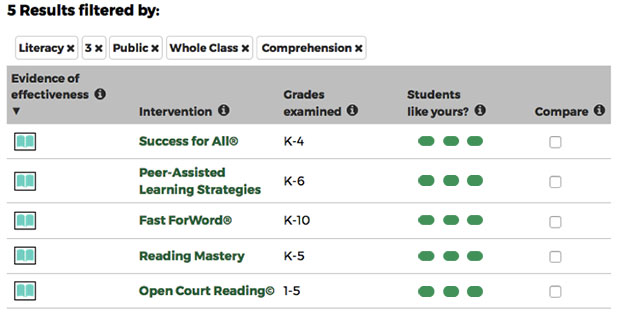
- For more detailed information about effectiveness, click on one or more of the check boxes under the “Compare” header. To see the results, select the green “Compare Selected” button above the table header.
